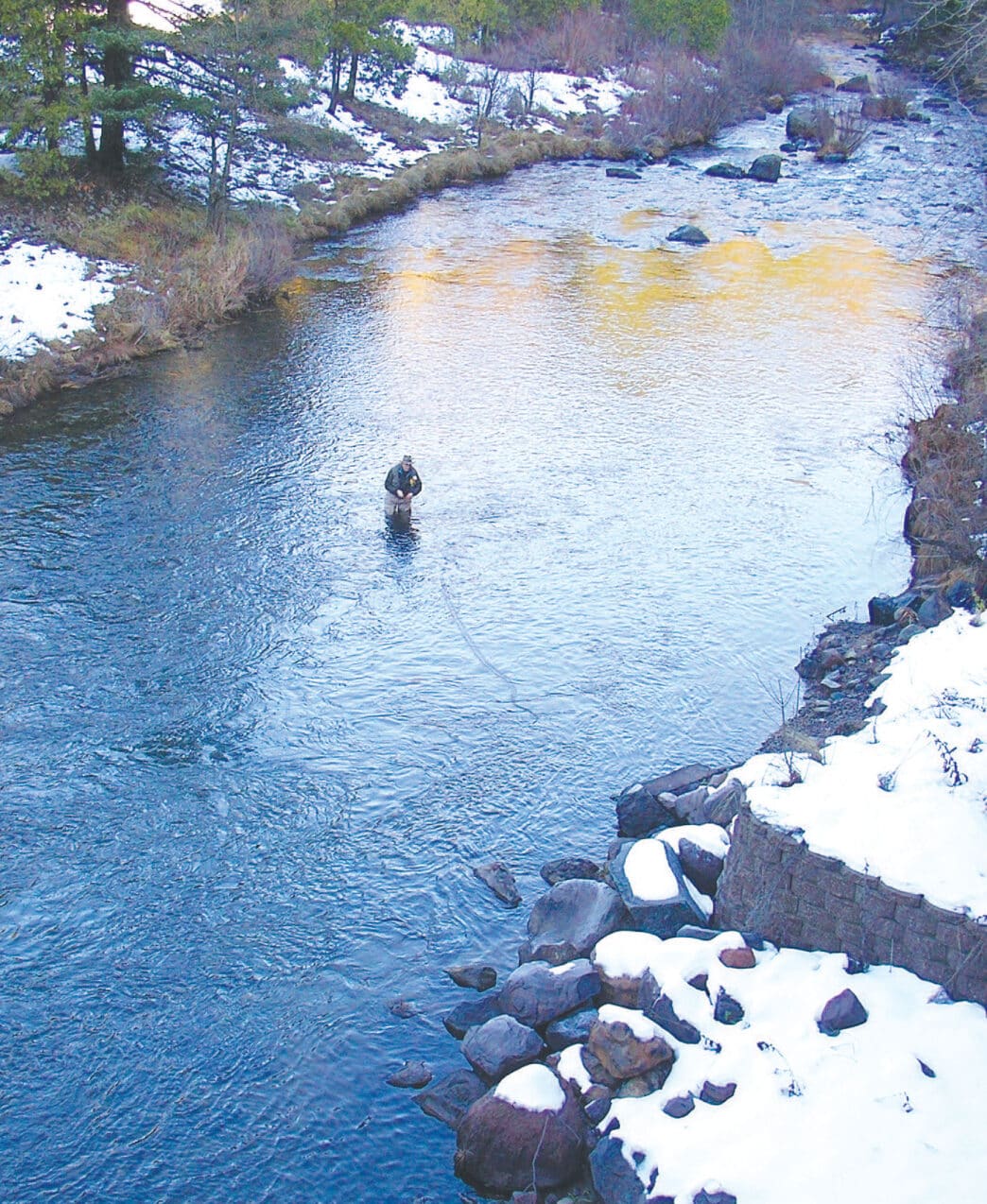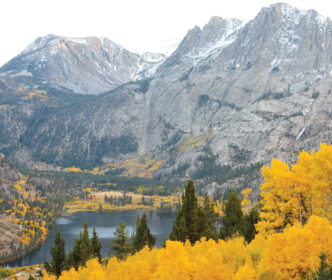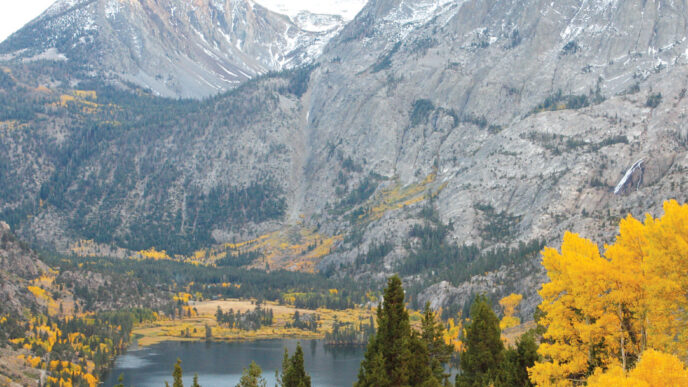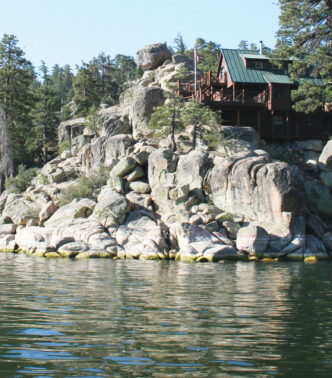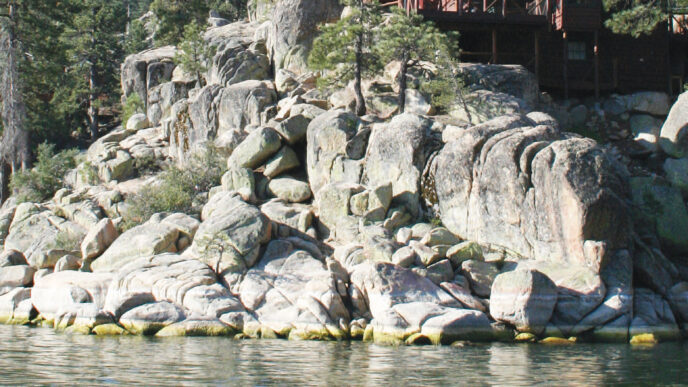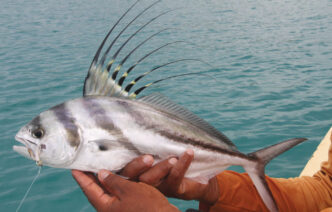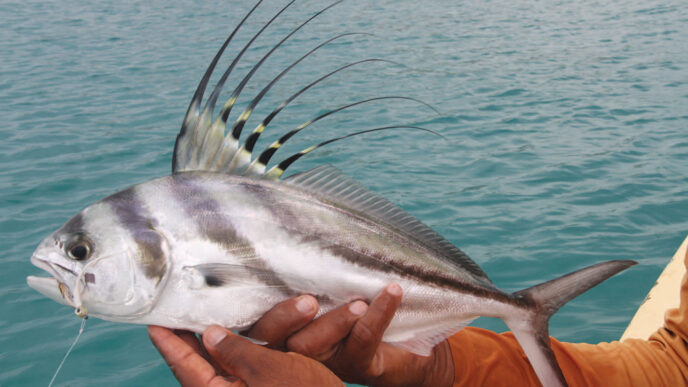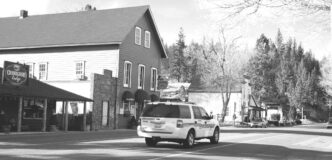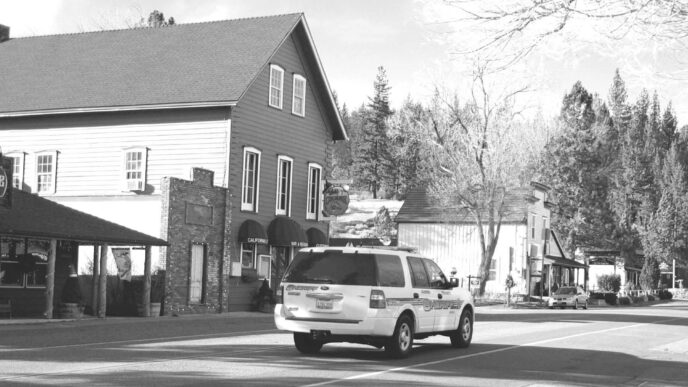I remember years when the last day of trout season — November 15 — was a real downer. We packed up the fly-fishing gear and dusted off the ski equipment. And when I sat on a ski-lift chair heading up a mountain, the snow-covered woods passing by drove home the point: it would be several months before I could head out to a stream again.
While the snow may still be there, possibilities have dramatically changed.
For several years now, a fly fisher can cast a fly year-round on many of California’s top rivers: the East Walker, the upper and lower Owens, Hot Creek, the Truckee, the Little Truckee, the North Fork of the Yuba, the American, the East Fork of the Carson, the Tuolumne, the upper and lower Kern, the Merced, and the upper and lower Sacramento. To preserve the resource, all or most of these waters have zero limits during the winter season. (Check the regulations.) I can attest to the delight of hooking trout throughout the winter. Just one hookup is enough to brighten an otherwise dreary winter day for me.
Fly fishing in the winter is different from fishing during the regular season. It’s colder, obviously, with more unpredictable water flows. But steelheaders have been plying their trade in the winter for as long as there has been steelhead fishing — “the worse the weather, the better.” It’s not exactly the same, however, when casting for trout in waters much colder than what typically turns them on. Nonetheless, the rewards can be gratifying, for this might be the time to catch your biggest fish of the year. Also, it may be your best chance for enjoying nature in solitude, an opportunity not often available on popular rivers across the traditional season.
The upper Sacramento River now has been open for winter fishing long enough for guides and fly-shop owners to have developed a good sense of when, what, where, and how to fish this blue-ribbon trout stream when the snow flies. Winter is when the owner of the Ted Fay Fly Shop in Dunsmuir, Bob Grace, can find free moments to go out and fish, and he says that the main objective is to target the interval when the trout are feeding, typically a much more condensed time frame than in the warmer months. It can be a voracious bite, but one that lasts only 20 to 40 minutes, usually between 11:00 A.M. and 3:00 P.M., when temperatures rise under sunny skies or a high overcast. Hatches of Blue-Winged Olives are what mainly spurs the feeding activity. So for dry-fly aficionados, a BWO imitation, size 16 to 20, is the ticket. Alternatively, a small nymph in these same sizes as a dropper under a dry fly can be effective. Bob Grace recommends a BWO nymph imitation or other tiny mayfly patterns. He says a small Prince Nymph also catches fish.
Grace confirms what many others have said: winter is the time to catch the biggest fish on this river. Smaller fish seem to disappear, so the number of hookups will be far fewer. But trout, especially big trout, still have to eat. So if you do hook one, it alone is apt to be well worth the outing.

It’s somewhat of a mystery why there are consistently bigger fish caught at this time of year. Grace believes these are holdover rainbows and the occasional brown that migrate up the river in mid to late summer, when Shasta Lake heats up. These larger fish then hang out in the river until high spring flows flush them downstream and back into the lake. He does not think these are spawning fish, except perhaps for some fall-spawning browns. And of course, there are still the numerous resident rainbows, many in the 16-to-20-inch range, which have led to the upper Sac being touted as one of the best wild-trout rivers in the country.
The entire upper Sacramento, from Box Canyon to the Delta Bridge, offers good winter fishing. Guides generally report the best angling occurs in the middle stretches — upriver and downriver of Sims Campground. But robust trout are taken in the lower and upper sections, as well.
Craig Nielsen, owner of Shasta Trout Guide Service, states: “When the upper Sac opened for year-round fishing, we were pleasantly surprised to learn that we caught more trophy rainbows (and a few browns) over 20 inches in the winter than any other time of the year.” He was more surprised that the most effective rig was a hopper/copper/dropper setup. He and his guides typically tie an October Caddis dry to a 7-1/2-foot leader and then add a couple of feet of 4X tippet off the bend of the hook. Here they tie on a Copper John or tungsten beadhead nymph for a rapid sink rate. Another foot down off the bend of the Copper John or nymph they add a small BWO beadhead nymph.

Nielsen recommends covering as much water as possible during the warmest part of the day. Once you’ve located a favorable piece of water, it’s a matter of getting the three-fly rig down deep. When doing so, he states, “we would hook trophy ’bows in even the highest of fishable flows.”
One angler who fishes strictly dry flies is Mt. Shasta’s Tom Chandler, author of the Trout Underground blog. In late November and on through December, he finds that trout will still take a size 8 October Caddis dry. He writes that he “slaps it into every piece of likely water. Don’t pass up the margins near the banks; in the fall and winter, trout will often hold amazingly close to the bank. I’m amazed at the number of trout I’ve caught in 18 inches of water.”
When he’s not casting this big pattern, Chandler is looking for BWO hatches and “a pod of big, feeding fish.” If he finds this combination, he reports the action, however brief, can be spectacular. His best hookup in 2011 was a 23-inch rainbow brought to the net on a size 20 dry. And of course, there are days when he gets skunked, probably more so in winter than in the warmer months.
Using small dries or nymphs isn’t the only tactic to employ on this river in the winter, and in fact may not be the most effective. The most effective approach could be running a streamer, such as a black Woolly Bugger or a Rubberlegs pattern, down deep in the runs and pools. Bob Grace cites a size 8 Rubberlegs with a chenille body as a good choice. But many underwater patterns can attract a big rainbow when fished deep. (As I pointed out in “ Why You Should Fish the Woolly Worm” in the September/October issue of California Fly Fisher, don’t hesitate to try a Woolly Worm.) This approach produced one of the most spectacular hookups on the upper Sac in recent years, a 27-inch brown that Dunsmuir resident and fishing guide Wayne Eng hooked in December of 2009 on a Woolly Bugger at “a time when rain and snowmelt were just starting to raise the river and discolor the water.” These actually may be the best conditions under which to hook that lunker of your dreams. Since the upper Sacramento presents many water types — deep pools alongside or between rock walls, riffles, plunge pools, long runs and flats, and tailouts — fly fishers should adapt their methods to the type of water. Always approach the edges first, working them assiduously, as Chandler recommends. If no fish lurk in this shallower water, then systematically cast your fly farther out to probe the deeper lies.
Winter brings with it weather that can change by the hour, precipitation, and varying flows. The best fishing occurs when the river flows below 1,000 cubic feet per second (cfs), the lower the better for access to good water. Bob Grace says the river is fishable as high as 2,000 cfs, even up to 4,000 cfs. Higher flows mean more walking to find fishable water and taking extra care when wading, if entering the water is even a possibility. When the river is high and rushing, safety precautions come first.
Discolored, heavy flows are generally not fishable, except for the diehard who, rather than staying at home near a fire or riding a chairlift up a mountain in the blustery cold, prefers to take a chance, however remote, at catching a fish holding next to shore.
If You Go . . .
Before heading to the Upper Sacramento River, it’s best either to call ahead or to check Web sites for up-to-date accounts of conditions. Bob Grace at the Ted Fay Fly Shop in Dunsmuir can be reached at (530) 235-2969. Several blogs offer current information on fishing prospects, including those of Craig Nielsen’s Shasta Trout (http://www.shastatrout.com/fishing-reports), Tom Chandler’s Trout Underground (http://troutunderground.com), and Rick Cox’s McCloud Fly Fishing Adventures (http://www.mccloudflyfishing.com/fishingreports.html). A call or stop at The Fly Shop in Redding (530-222-3555) will also give you all the information you need; visit http://www.theflyshop.com/streamtreport.html.
A winter outing on the upper Sac can be readily combined with fishing other waters, including the lower Sac and the Trinity and Klamath Rivers, the latter two being primarily steelhead waters. Googling any of these rivers for fly-fishing opportunities gives you extensive info on guiding services, if that is your preference. One can also combine a fly-fishing outing with a ski outing at the Mt. Shasta Ski Park.
Overnight accommodations are readily available in Redding, Dunsmuir, and Mt. Shasta. Redding has too many choices to list here, many of the top chains being right along Interstate 5. Possibilities in Dunsmuir include the Cave Springs Motel, Cedar Lodge Motel, and Railroad Park Resort. Mt. Shasta also has a slew of places for overnight stays, including the Mt. Shasta Resort, the Best Western Tree House, the Strawberry Valley Inn B&B, and the Mt. Shasta Ranch B&B.
Bob Madgic




